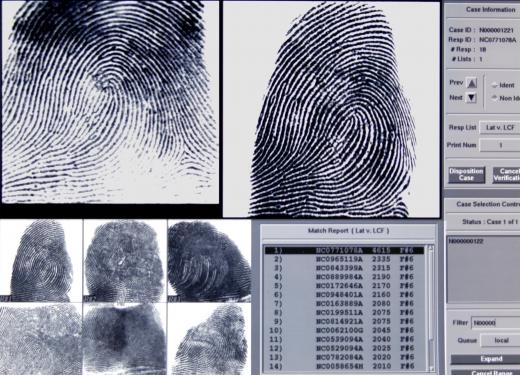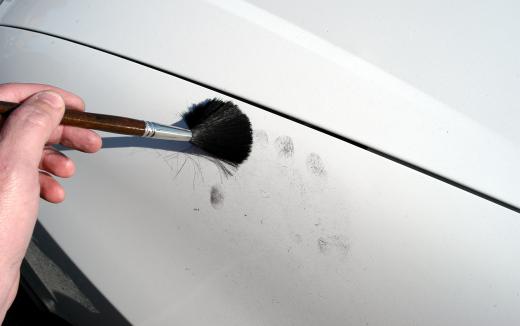What Is Fingerprinting?
Fingerprinting is the act of taking impressions of a person's fingerprints to be used for identification purposes. Commonly completed at the time of booking into the legal system at a jail house, the fingerprinting is completed and attached to a permanent file that accompanies the individual throughout the legal and penal system. Originally accomplished by rolling a finger in ink and transferring the ink to a fingerprint card, the modern method uses a computer to scan the images of the fingerprints. With this method, the fingerprinting is completed without the mess of the traditional inking system.
The fingerprints of no two humans are exactly alike. This makes fingerprinting a very accepted method of identifying a human, whether alive or dead. The identification process is completed in modern forensic labs by placing the most recent image of a known set of fingerprints into a computer. The computer is linked to a site that stores every set of fingerprints ever taken on file; if a match is detected, the computer will register the prints to a known person. In the United States, this fingerprinting site is comprised of every set of fingerprints taken by a law enforcement agency, medical facilities and military institutions on record.

The earliest fingerprinting was accomplished by rolling a person's fingers gently in a spot of ink and then rolling the fingers carefully across a file card. All four fingers, the thumb as well as a palm print, are typically registered during fingerprinting. Babies often have their fingerprints and foot prints taken at the time of their birth. This makes it possible to identify a young child in the case of an emergency or an accident. Unlike dental imprints, fingerprints commonly remain unchanged throughout a person's lifetime.

It is not simply law enforcement agencies that take a person's fingerprints. Many employers in highly sensitive or secure industries commonly take the fingerprints of prospective employees to complete background and criminal history checks. Military institutions also complete fingerprinting documentation on soldiers to aid in the identification of war casualties and recovered remains. Fingerprints are also used on passports, professional licenses as well as by some banking institutions to positively identify a person when cashing a check or making a transaction. Although attempted through the use of acids, sandpaper and other means, there is no extremely successful method of altering one's personal fingerprints to the extent that the fingerprints become unrecognizable when compared to a preexisting set of the person's fingerprints.
AS FEATURED ON:
AS FEATURED ON:













Discussion Comments
I had to get one of those FBI fingerprint cards to work as a volunteer in Europe. The funny thing to me was that it's meant to show your "criminal history" and so far I have none; so really I was waiting so long for a paper that basically only had my name on it.
@mitchell14- I have known people to have trouble too; sometimes different people also work better trying to get electronic fingerprinting done, while for others it's worse. It makes me wonder if there's some sort of lifestyle reason why so many people have trouble leaving reliable finger prints, but I don't know why.
I had to get finger printing to work abroad and it was a big hassle. Many of my colleagues have had real trouble with finger prints getting rejected and needing to spend a lot of time getting them redone and submitting them over and over again before finally being cleared. When I first got my visa it took me several months. It's a tiring system for something that seems so easy when you think about it.
Post your comments